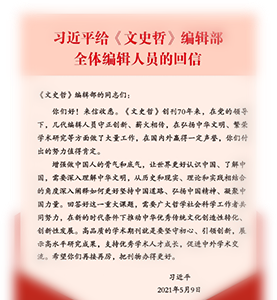论国学的内涵及其施教——马一浮国学论的立教义旨 刘梦溪
在马一浮看来,“国学”应该是指“六艺之学”,也就是《诗》、《书》、《礼》、《易》、《乐》、《春秋》六经。把国学定义为“六艺之学”,是马先生的学理发明,是大学者的高明之见。因为“六艺”或曰“六经”,是中国学术的经典源头,是中国文化的最高型态,定义“六艺之学”为国学,可以使国学成为中国固有学术的经典之学。如果我们能够认同马先生的国学定义,以“六艺之学”作为国学的基本义涵,具体包括经学和小学。那么,大学的国学院应该有三部的设置:经学部、小学部和国学教育部。百年来的国学与现代学术分科的纠结,便可以迎刃而解。马一浮国学论的另一贡献,是发现《论语》里面有“六艺”。《论语》是可以直接通六艺的,《论语》反复讲述的义理,就是六经的基本义理。因此,欲学六艺不妨从《论语》开始。
A Discussion of the Connotation of “Guoxue” and Its Education:
The Gist of Ma Yifu’s Idea of “Guoxue” as “Studies of the Six Classics” Liu Mengxi
To Ma Yifu, “guoxue” refers to the studies of “Six Arts” or “Six Classics”, i.e. The Book of Songs, The Book of History, The Book of Rites, The Book of Changes, The Book of Classic Music, and Spring and Autumn Annals. Defining guoxue as “studies of Six Classics” is a wise invention of Ma. Because the “Six Classics” is the source of Chinese academics as well as the highest form of Chinese culture, such a definition can make it the classical learning of inherent Chinese academics. If “studies of Six Arts” can be regarded as the essential denotation of guoxue, which includes studies of Confucian classics and philology, the school of Chinese classics in universities should establish three branches: a Department of Confucian Classics, a Department of Philology, and a Department of Six Arts Education. Then the entanglement between “Guoxue” and modern academic branches which haslasted for more than one century can be readily solved. Another contribution of Ma’s idea of “Guoxue” is to discover that there is “Six Arts” existing in The Analects of Confucius. The Analects can directly connect with “Six Arts,” and the doctrines repeatedly narrated in The Analects are just the fundamental doctrines of “Six Arts.” Therefore, one could start from The Analects if he/she wants to learn “Six Arts.”


